World's Most Dangerous Hacker 2025
Discover the world’s most dangerous hackers and their notorious exploits. Explore profiles of infamous figures like Kevin Mitnick, Adrian Lamo, and Albert Gonzalez, and learn about their impact on cybersecurity. Understand how these hackers have shaped the digital landscape through high-profile attacks and what their actions reveal about cyber threats and defenses.
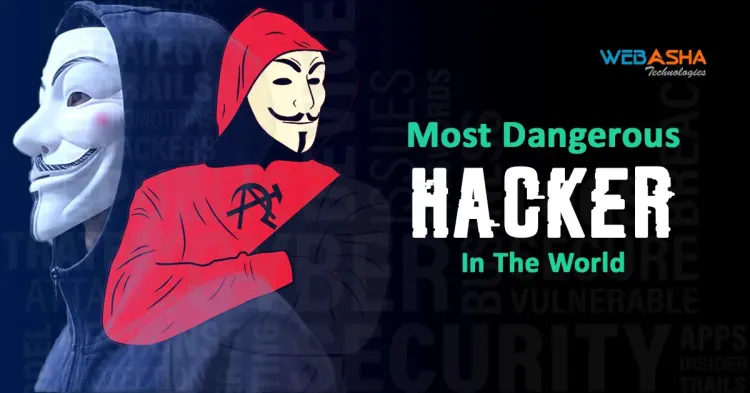
In an era where digital transformation is reshaping industries and daily life, cybersecurity has become more crucial than ever. As technology advances, so do the techniques employed by those who seek to exploit its vulnerabilities. With the proliferation of sensitive data and critical infrastructure online, ensuring robust protection against cyber threats has become a top priority for organizations and individuals alike.
Among the myriad of cybersecurity threats, certain hackers have made headlines not just for their technical prowess but for the significant damage they have inflicted. These individuals, often termed "dangerous hackers," operate at the intersection of cybercrime and digital warfare. Their activities range from stealing personal information and disrupting services to compromising national security. Their actions serve as stark reminders of the vulnerabilities inherent in our increasingly connected world.
Understanding the profiles and methodologies of these dangerous hackers provides valuable insights into the evolving landscape of cyber threats. By examining their impacts, we can better appreciate the importance of robust cybersecurity measures and remain vigilant against the ever-present threat of cybercrime.
Concept of Dangerous Hackers
Dangerous hackers are individuals or groups who engage in illegal or malicious activities in the digital realm. Their actions often go beyond typical hacking, focusing on causing significant harm, disruption, or theft. These hackers possess advanced technical skills and employ sophisticated methods to breach systems, evade detection, and exploit vulnerabilities. They operate with varying motivations, including financial gain, political agendas, personal vendettas, or simply the challenge of overcoming security defenses.
Dangerous hackers can be categorized into several types, including:
-
Cybercriminals: Motivated by financial gain, these hackers often engage in activities such as identity theft, financial fraud, and ransomware attacks.
-
Hacktivists: Driven by political or social causes, hacktivists use their skills to protest, disrupt, or draw attention to their causes, often targeting government or corporate entities.
-
State-Sponsored Hackers: Operated or supported by nation-states, these hackers engage in cyber espionage, data theft, and sabotage, aiming to advance national interests or undermine adversaries.
-
Script Kiddies: Although less skilled, these hackers use pre-written scripts or tools to launch attacks, often causing disruption without fully understanding the consequences.
Types of Hackers
Hackers come in various forms, each with distinct motivations and methods. Understanding these types can help in identifying and defending against different cyber threats. Here’s a breakdown of the primary categories of hackers:
1. White Hat Hackers
- Role: Ethical hackers or security researchers.
- Motivation: To improve security by finding and fixing vulnerabilities before malicious hackers can exploit them.
- Activities: Conduct penetration testing, security assessments, and vulnerability research. They often work with organizations to strengthen their defenses.
- Legality: Operate within legal boundaries with permission from the system owner.
2. Black Hat Hackers
- Role: Malicious hackers or cybercriminals.
- Motivation: Personal gain, such as financial profit, stealing data, or causing disruption.
- Activities: Perform illegal activities like data breaches, installing malware, or executing ransomware attacks. Their actions are unauthorized and harmful.
- Legality: Operate outside the law, often leading to criminal charges.
3. Gray Hat Hackers
- Role: A blend of ethical and unethical hacking.
- Motivation: Often seek to highlight vulnerabilities or flaws in systems without malicious intent but may not have explicit permission to access the systems.
- Activities: Discover and report security flaws, sometimes without authorization, and may or may not disclose vulnerabilities to the public.
- Legality: Operate in a legal gray area; their actions may not always be legally sanctioned.
4. Hacktivists
- Role: Activists who use hacking as a form of protest.
- Motivation: To promote political or social causes, expose corruption, or draw attention to specific issues.
- Activities: Target organizations or governments to disrupt services, leak information, or make political statements.
- Legality: Often illegal, though driven by ideological motives rather than personal gain.
5. State-Sponsored Hackers
- Role: Operatives working on behalf of a government or state.
- Motivation: National interests, such as espionage, data theft, or disruption of rival states' activities.
- Activities: Conduct sophisticated attacks, including cyber espionage, data theft, and infrastructure sabotage. They use advanced techniques and resources.
- Legality: Acts are sanctioned by the state but considered illegal by other nations or entities.
6. Script Kiddies
- Role: Novice hackers using pre-written tools and scripts.
- Motivation: Often driven by curiosity, ego, or a desire to cause minor disruption.
- Activities: Use readily available hacking tools to perform attacks without a deep understanding of underlying techniques. Their actions can still cause damage.
- Legality: Typically engage in illegal activities but with limited skill or intent compared to more experienced hackers.
7. Insider Threats
- Role: Employees or contractors within an organization who misuse their access.
- Motivation: Can range from financial gain to revenge or espionage.
- Activities: Abuse access privileges to steal data, disrupt operations, or sabotage systems from within.
- Legality: Often involves illegal activities, though the perpetrators may have legitimate access to the systems they compromise.
Understanding these types of hackers is crucial for developing effective security strategies and responding to potential threats. Each category presents unique challenges and requires tailored approaches to ensure comprehensive protection
Top Most Dangerous Hackers
1. Kevin Mitnick
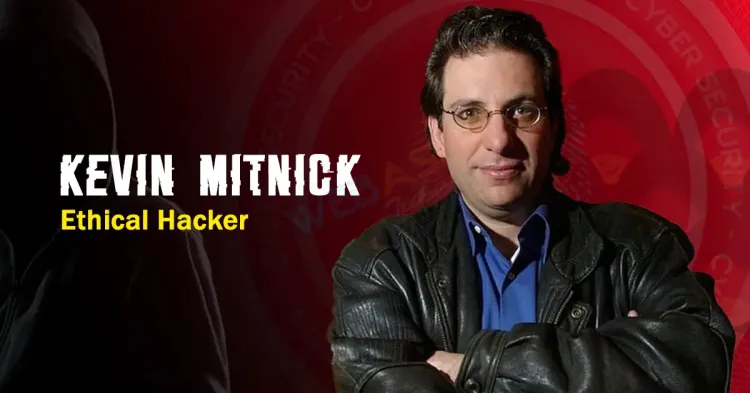
- Overview: Once the FBI’s most-wanted hacker, Mitnick gained notoriety for his expert use of social engineering to breach major corporate systems.
- Notable Activities: Hacked into companies like IBM, Nokia, and Motorola. His methods included exploiting human vulnerabilities to gain unauthorized access.
- Impact: His 1995 arrest led to significant cybersecurity reforms. Mitnick now works as a security consultant, advising on cybersecurity best practices.
2. Albert Gonzalez

- Overview: Leader of one of the largest credit card theft rings in history, Gonzalez was involved in massive data breaches.
- Notable Activities: Stole credit card information from over 170 million people by compromising major retailers’ databases.
- Impact: His actions exposed major flaws in payment security, prompting improvements in data protection and encryption practices.
3. Adrian Lamo
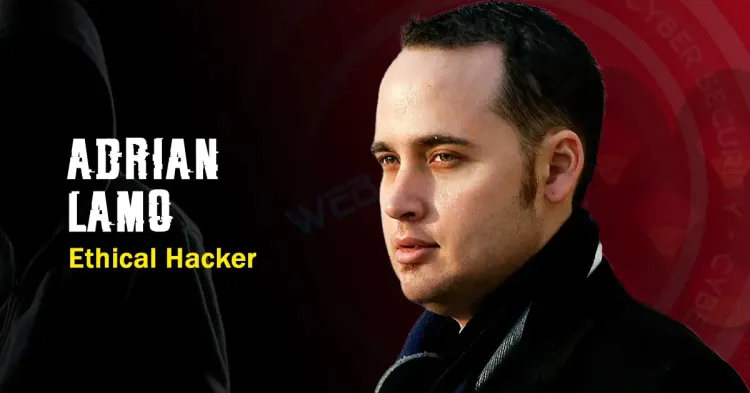
- Overview: Known as the "Homeless Hacker," Lamo was infamous for his high-profile hacks and controversial whistleblowing.
- Notable Activities: Hacked into Microsoft and The New York Times; reported Chelsea Manning’s leaks, leading to Manning’s arrest.
- Impact: His activities sparked debates on the ethics of hacking and whistleblowing, and highlighted vulnerabilities in major systems.
4. Gary McKinnon

- Overview: A British hacker who disrupted U.S. military and NASA systems, McKinnon is known for his extensive unauthorized access.
- Notable Activities: Hacked into government computers, deleting critical files and causing significant disruptions.
- Impact: His case underscored the need for better cybersecurity in government institutions and raised issues about international legal jurisdiction.
5. Fancy Bear (APT28)

- Overview: A sophisticated Russian hacking group with suspected ties to the Russian government, Fancy Bear is known for its high-profile cyber espionage.
- Notable Activities: Involved in the 2016 Democratic National Committee (DNC) email hack and other politically motivated cyberattacks.
- Impact: Demonstrated the role of state-sponsored hacking in geopolitical conflicts and exposed vulnerabilities in political and electoral systems.
6. Lizard Squad
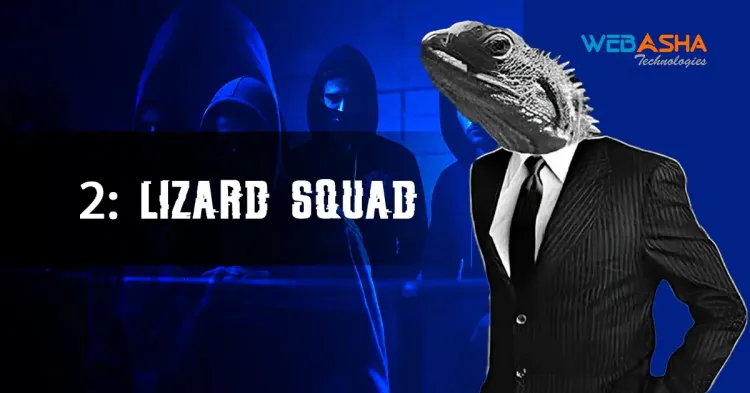
- Overview: A hacker group known for its disruptive attacks on online gaming platforms.
- Notable Activities: Conducted DDoS attacks on PlayStation Network and Xbox Live, causing widespread service outages.
- Impact: Highlighted vulnerabilities in online gaming infrastructure and the potential for digital service disruptions.
7. The Dark Overlord
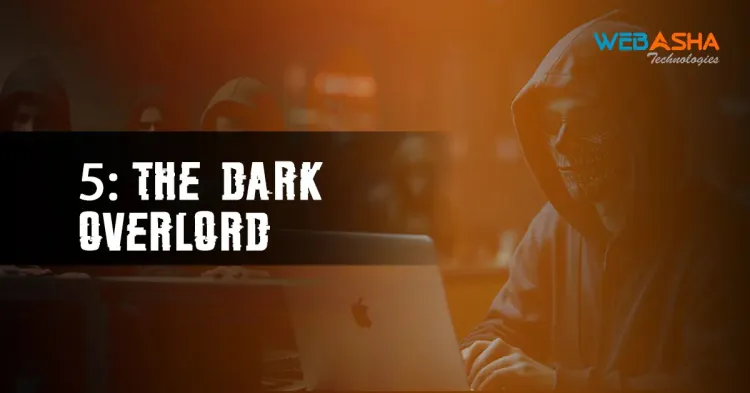
- Overview: A hacker group known for its extortion and data theft activities, particularly targeting healthcare and entertainment sectors.
- Notable Activities: Stole and threatened to release sensitive data from various organizations, including healthcare providers and movie studios.
- Impact: Exposed the risks associated with data breaches and the growing threat of cyber extortion in various industries.
8. Jonathan James

- Overview: Known as "comrade" online, James was the first juvenile to be jailed for hacking in the U.S.
- Notable Activities: Hacked into NASA and Department of Defense networks, stealing sensitive information.
- Impact: His case highlighted the vulnerabilities in government and defense systems and the increasing involvement of young hackers in serious cybercrime.
Impact on the Digital World
The activities of dangerous hackers have profound and far-reaching impacts on the digital world:
-
Financial Losses: The direct costs of cybercrimes, such as theft, fraud, and ransomware payments, can be staggering. Organizations may face significant financial losses due to operational disruptions, legal fees, and the costs associated with mitigating breaches.
-
Data Breaches: Dangerous hackers often target sensitive personal, financial, and corporate information. Data breaches can result in the exposure of private information, leading to identity theft, financial loss, and reputational damage for individuals and organizations.
-
Operational Disruptions: Attacks such as Distributed Denial of Service (DDoS) can cripple online services, rendering websites and digital platforms inaccessible. This disruption can affect business operations, customer service, and critical infrastructure.
-
National Security Risks: State-sponsored hackers and other high-profile attackers pose significant risks to national security. Their activities can undermine governmental operations, steal sensitive military or intelligence data, and potentially influence geopolitical dynamics.
-
Reputational Damage: The fallout from a significant cyberattack can tarnish the reputation of affected organizations. Loss of customer trust and damage to brand reputation can have long-lasting effects on a company's market position and customer base.
-
Increased Cybersecurity Awareness: The activities of dangerous hackers have led to increased awareness and investment in cybersecurity. Organizations are prompted to enhance their defenses, adopt advanced security measures, and educate employees about cyber threats.
By understanding the nature and impact of dangerous hackers, individuals and organizations can better prepare and defend against cyber threats. Proactive measures, ongoing vigilance, and investment in cybersecurity are essential to mitigating the risks posed by these malicious actors and protecting the digital world from their harmful influence..
Lessons Learned and Preventive Measures
Understanding the impact of the world’s most dangerous hackers provides valuable insights into how to strengthen cybersecurity defenses and prevent similar attacks. Here are the key lessons learned from these hackers' exploits and the preventive measures that can be adopted to mitigate risks:
Lessons Learned
Importance of Robust Security Protocols
Lesson: Many high-profile breaches were possible due to weak or outdated security protocols.
Insight: Organizations must continually update and enforce robust security measures, including encryption, access controls, and authentication processes.
Role of Social Engineering
Lesson: Hackers like Kevin Mitnick exploited human psychology to gain unauthorized access, demonstrating the effectiveness of social engineering tactics.
Insight: Educating employees about social engineering techniques and conducting regular training can help reduce the risk of falling victim to these types of attacks.
Need for Regular Security Audits
Lesson: The lack of regular security audits and vulnerability assessments often led to the exploitation of known weaknesses.
Insight: Regularly scheduled security audits, penetration testing, and vulnerability assessments are essential to identifying and addressing potential security gaps before they can be exploited.
Impact of Insider Threats
Lesson: Cases like that of Adrian Lamo highlight the potential threat posed by insiders who can misuse their access for malicious purposes.
Insight: Implementing strict access controls, monitoring user activity, and conducting background checks can help mitigate the risks associated with insider threats.
Consequences of Poor Data Protection
Lesson: Albert Gonzalez’s credit card theft operation underscored the consequences of inadequate data protection and breach responses.
Insight: Effective data protection measures, including encryption, tokenization, and secure data storage practices, are crucial for safeguarding sensitive information.
Need for International Cooperation
Lesson: Gary McKinnon’s case demonstrated the challenges of international jurisdiction and cooperation in dealing with cybercrime.
Insight: International cooperation and information sharing between law enforcement agencies, cybersecurity experts, and governments are vital for effectively combating global cyber threats.
Preparedness for Disruptive Attacks
Lesson: Lizard Squad’s DDoS attacks on online gaming platforms showed the impact of service disruptions on users and businesses.
Insight: Implementing DDoS protection solutions, having an incident response plan in place, and regularly testing system resilience can help mitigate the effects of such attacks.
Preventive Measures
Implement Comprehensive Security Policies
Develop and enforce security policies that cover all aspects of cybersecurity, including data protection, incident response, and user access controls.
Regularly review and update these policies to adapt to evolving threats.
Conduct Regular Security Training
Provide ongoing cybersecurity training for employees to educate them about common threats, social engineering tactics, and safe online practices.
Simulate phishing attacks and other scenarios to test and reinforce training effectiveness.
Use Advanced Security Technologies
Deploy advanced security technologies such as firewalls, intrusion detection systems, and multi-factor authentication to enhance system defenses.
Utilize encryption to protect sensitive data both in transit and at rest.
Monitor and Audit Systems Continuously
Implement continuous monitoring solutions to detect and respond to suspicious activities in real time.
Conduct regular security audits and vulnerability assessments to identify and address potential weaknesses.
Establish Incident Response Plans
Develop and maintain a detailed incident response plan to quickly and effectively address security breaches and other cyber incidents.
Regularly test and update the plan to ensure its effectiveness during an actual incident.
Enhance Data Protection Measures
Utilize encryption, data masking, and tokenization techniques to protect sensitive information from unauthorized access and breaches.
Regularly review and update data protection practices to align with industry standards and regulatory requirements.
Foster Collaboration and Information Sharing
Collaborate with industry peers, cybersecurity organizations, and law enforcement agencies to share information about threats and best practices.
Participate in information-sharing initiatives and cybersecurity forums to stay informed about emerging threats and defense strategies.
By applying these lessons and preventive measures, organizations and individuals can strengthen their cybersecurity posture, better defend against potential threats, and reduce the likelihood of falling victim to dangerous hackers.
Conclusion
The world’s most dangerous hackers have profoundly influenced the landscape of cybersecurity through their audacious and often devastating actions. Figures like Kevin Mitnick, Adrian Lamo, Albert Gonzalez, and groups such as Fancy Bear and Lizard Squad have demonstrated the far-reaching consequences of cybercrime, from financial losses and data breaches to national security threats and operational disruptions.
Their exploits reveal critical vulnerabilities in digital systems and highlight the necessity for robust, adaptive security measures. The persistent evolution of hacking techniques underscores the importance of staying ahead of potential threats through continuous vigilance, proactive security practices, and ongoing education.
The impact of these hackers serves as a stark reminder of the risks associated with digital vulnerabilities and the pressing need for enhanced cybersecurity strategies. By learning from past incidents and implementing comprehensive preventive measures—such as advanced security technologies, regular audits, and effective incident response plans—organizations and individuals can better protect themselves against the growing threats posed by cybercriminals.
In conclusion, while the tactics of dangerous hackers have evolved, the fundamental principles of robust security and vigilance remain essential. Embracing these lessons and reinforcing cybersecurity defenses is crucial for safeguarding sensitive information and maintaining trust in the digital age.
FAQs
1. Who is the world’s most dangerous hacker?
Answer: Notable figures include Kevin Mitnick for social engineering, Albert Gonzalez for credit card theft, and Fancy Bear (APT28) for political cyberattacks.
2. What methods do dangerous hackers use?
Answer: They use social engineering, malware, phishing, DDoS attacks, and exploit system vulnerabilities.
3. How does Albert Gonzalez impact businesses?
Answer: Gonzalez's theft led to financial losses and exposed payment data vulnerabilities, prompting stronger data protection measures.
4. What are the consequences of major hacking incidents?
Answer: Consequences include financial loss, reputation damage, legal issues, and operational disruption.
5. How can organizations protect themselves?
Answer: Use strong encryption, multi-factor authentication, regular audits, employee training, and incident response plans.
6. What role do state-sponsored hackers play?
Answer: They engage in cyber espionage and political interference, impacting national security and international relations.
7. How can individuals protect themselves?
Answer: Use strong passwords, enable multi-factor authentication, be cautious of phishing, and keep systems updated.
8. Are there legal consequences for hackers?
Answer: Yes, hackers face criminal charges, fines, and imprisonment based on the severity of their crimes.
9. How has hacking evolved?
Answer: Hacking has progressed from hobbyist activities to sophisticated, targeted cybercrimes, reflecting advances in digital technology.
10. How to improve cybersecurity awareness?
Answer: Through ongoing education, training, and promoting a culture of security.












![Top 10 Ethical Hackers in the World [2025]](https://www.webasha.com/blog/uploads/images/202408/image_100x75_66c2f983c207b.webp)



![[2025] Top 100+ VAPT Interview Questions and Answers](https://www.webasha.com/blog/uploads/images/image_100x75_6512b1e4b64f7.jpg)







